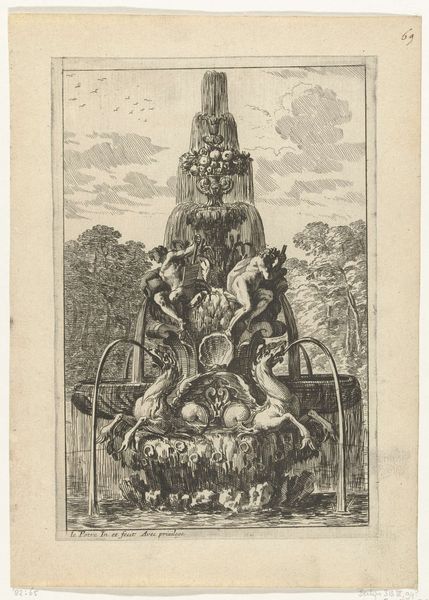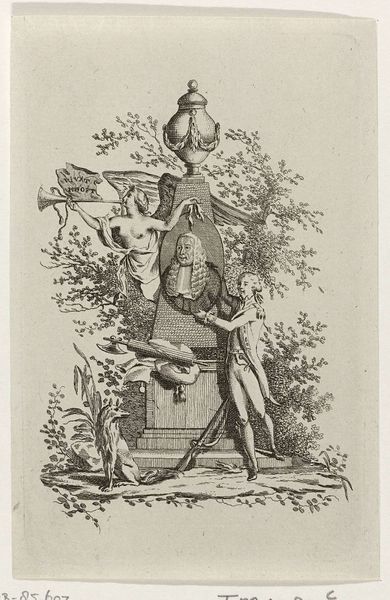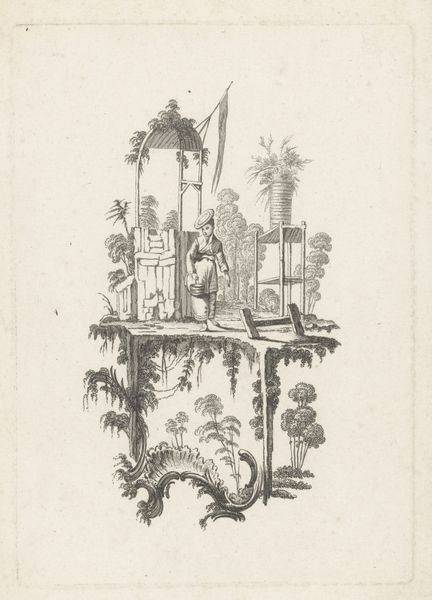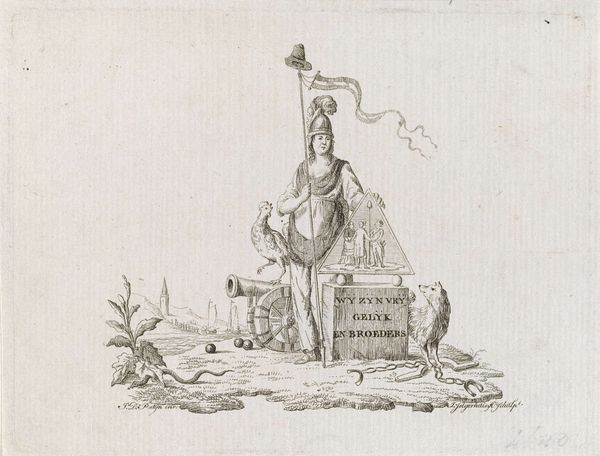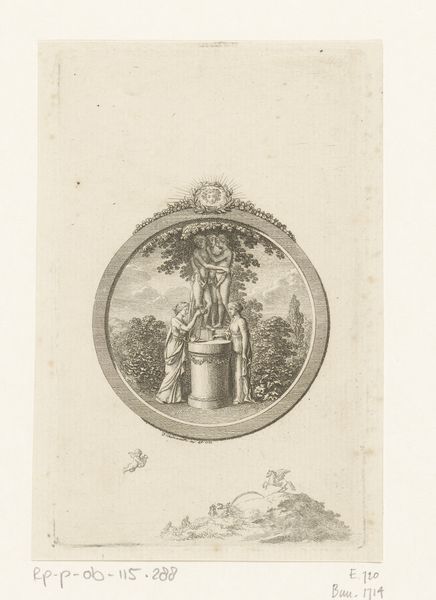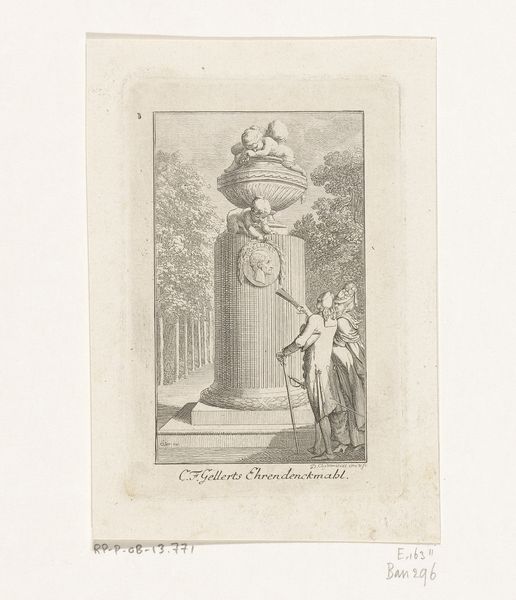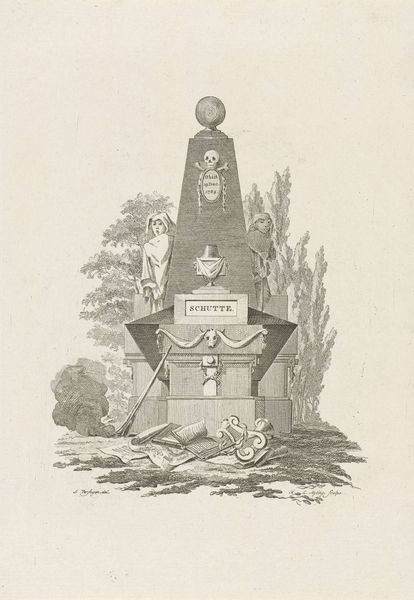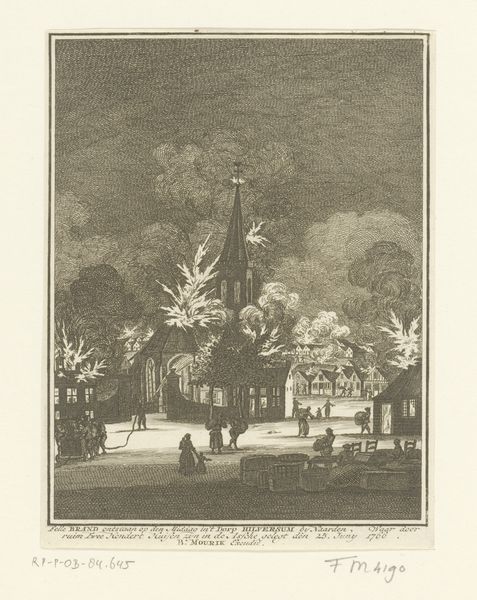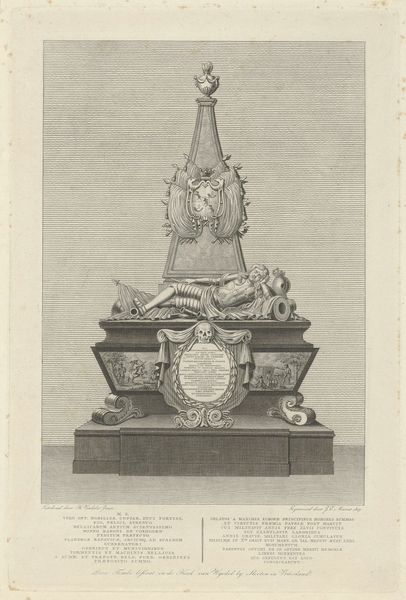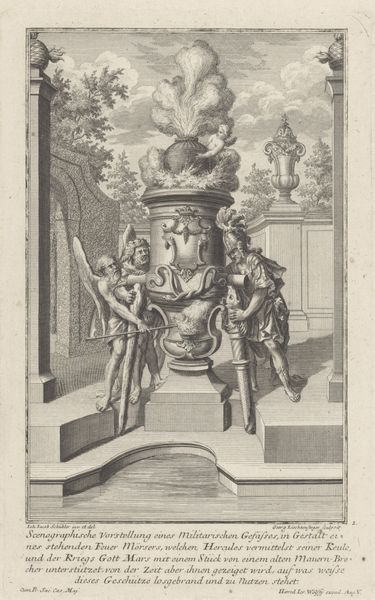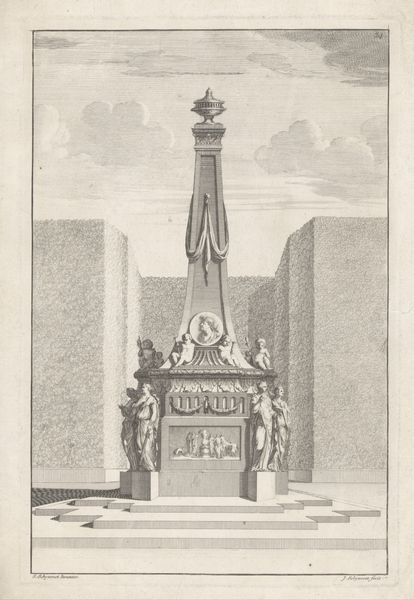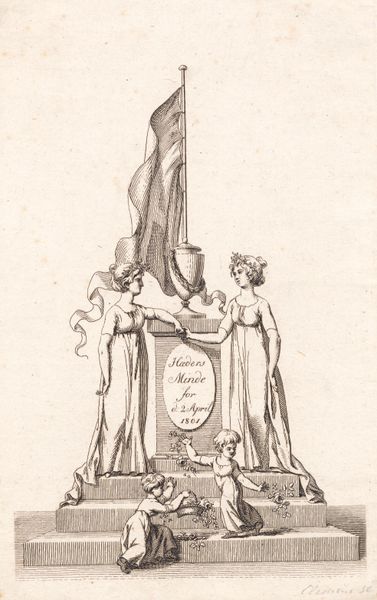
print, engraving
#
allegory
# print
#
classicism
#
cityscape
#
history-painting
#
engraving
Dimensions: height 215 mm, width 131 mm
Copyright: Rijks Museum: Open Domain
Editor: This is the title page for Gedagtenis voor Arnhems burgers, from 1783, by Izaak Jansz. de Wit. It's an engraving, and the whole scene feels very formal and posed, almost like a stage setting with classical figures. What strikes you about this piece? Curator: It’s fascinating to see how De Wit employs the visual language of classicism to frame the memory of Arnhem's citizens. Notice how allegory is deployed, not simply as decoration, but as a powerful tool for shaping historical narrative. I see here a commentary on civic virtue, rendered during a period rife with social and political upheaval. Editor: Civic virtue? Could you elaborate? I see the figures, but I'm not quite making the connection to specific historical events. Curator: Absolutely. Consider the context: 1783. The Dutch Republic was teetering, struggling with internal divisions and external pressures. This image is not merely commemorating citizens; it's actively constructing a specific image of citizenship. How does this visual representation of citizenship function ideologically? Who is included, and perhaps more importantly, who is excluded from this vision of “Arnhems burgers”? Editor: I see… so it’s not just about remembering, but also about defining what it meant to be a citizen of Arnhem at that particular moment. The lion seems to be guarding a scroll. I wonder what it means? Curator: Exactly. That lion embodies strength and vigilance but guarding what, whose strength, and for what cause? Look closer and reflect on what that signifies regarding power dynamics within the city, and the evolving concept of nationhood itself. It’s all about how these symbols work to create a specific historical narrative, a narrative interwoven with power, identity, and belonging. Editor: That adds a whole new layer of complexity! I thought it was just a commemorative print, but it’s actually a carefully constructed argument about citizenship and power. Thank you! Curator: Indeed. It highlights the ever-present need to critically examine how art participates in shaping our understanding of history and society.
Comments
No comments
Be the first to comment and join the conversation on the ultimate creative platform.
